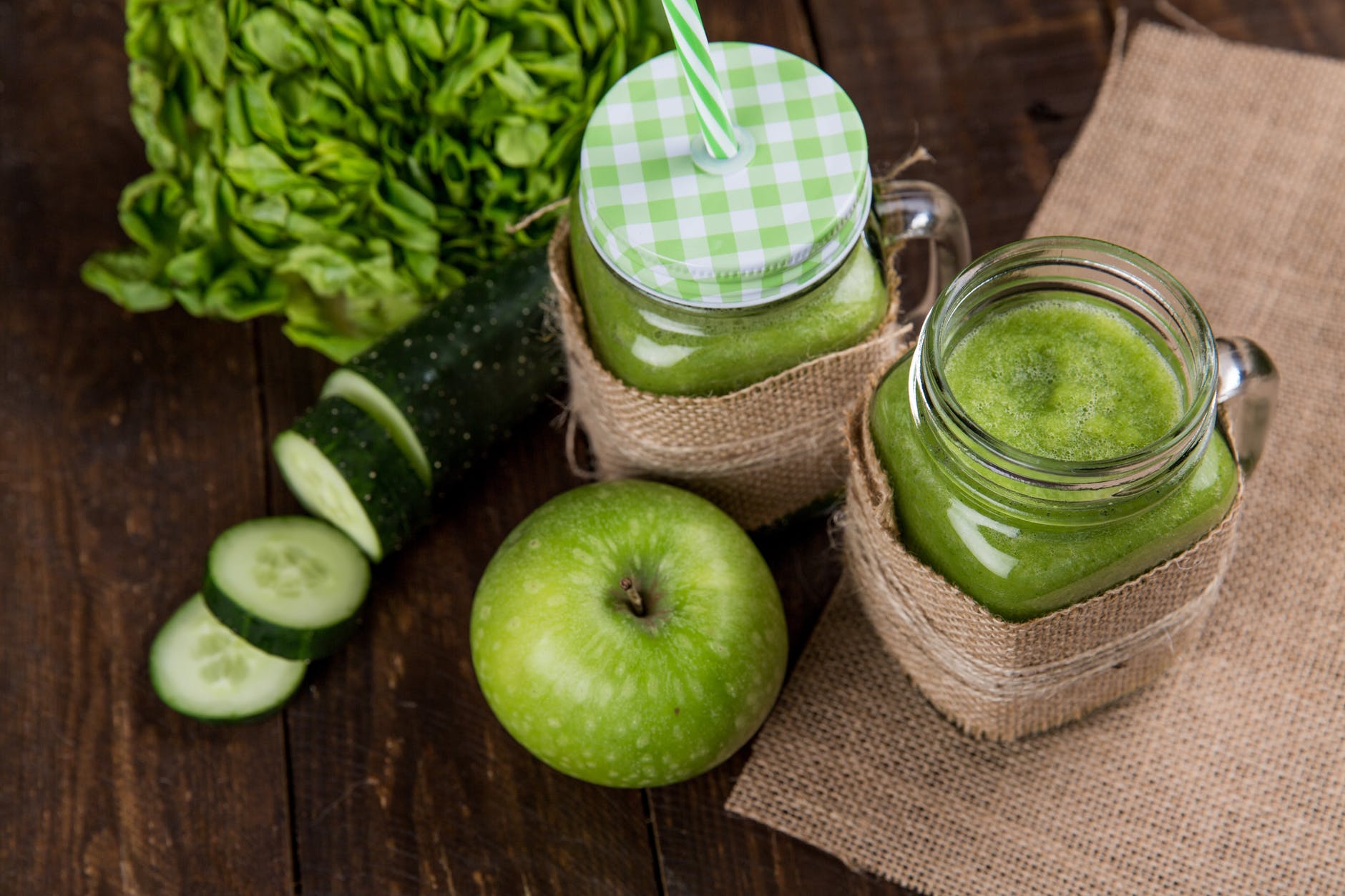I grew up eating ripe mangoes as viand. But I would barely touch any other fruit.
For some, the saying “an apple a day keeps the doctor away” just isn’t enough to tempt them to take a bite. Plus, if you have a good-looking doctor, a trip to the clinic isn’t such a bad thing.
So why force yourself to eat more fruits when you absolutely don’t like them? Here are top 3 reasons to include them in your diet.
1. Your body’s clamoring for some TLC.
When you’re young, you live like you can conquer anything.
Going to school or office with little to no sleep? That’s nothing!
Working and studying long hours, eating unhealthy foods, skipping meals, then running on caffeine and energy drinks? Surely, your body can handle it!
But eventually all those habits pile up. One day, your body reaches a tipping point.
If you’ve been abusing your body and haven’t suffered the consequences, then lucky you. But I hope you don’t wait for a serious illness before you course correct.
2. Accomplishing your goals–from self-care to relationships, career, and finance–all hinge on your staying alive.
It’s weird how we sacrifice our health as we build our careers and wealth. Then we start getting sick and we spend our wealth, and perhaps even delay or shift career paths, to take care of our health.
There’s a good reason why successful individuals are advocating that we prioritize our health. For example:
- Health and Fitness is the first in 12 categories in the comprehensive personal development course, Lifebook. Lifebook, which is founded by Jon and Missy Butcher, is one of Mindvalley‘s masterclasses.

- James Altucher’s infographic on the 20 Habits of Eventual Millionaires includes sleep (#16) and avoiding death everyday (#17).

- The 7 Habits of Highly Effective People includes sharpening the saw–that is, renewing our most valuable asset: ourselves.

Having said that, I have to admit I haven’t met anyone who got the whole work-life balance or work-life integration thing to a T.
There are some days when we just have to work longer hours. Sometimes, we need to go the extra mile and in doing so, we sleep a little late or wake up a bit earlier.
It also takes much trial-and-error to find out what work or sleep schedules work best for us.
3. Buying healthy foods is an investment on your health.
Some of us grew up thinking of food as a treat, as something to please the senses. But the primary function of food is to nourish us.
We want to spend our money on things that bring something good to our lives. That’s what adding a bit more fruits in your grocery list is about.
We put so much thought and care into choosing financial investments. We can choose to see food as an investment in one of our most important assets: our health.
Tweet
It’s hard not to think about how much you dislike the taste of some fruits. I know I’d pick chocolates over pineapples and oranges any day!
But try to focus on what fruits can do for your body.
Tweet
Here’s a list of some fruits and how they support your physical and mental health.
| Fruits | Nutrients | What It Does for You |
|---|---|---|
| Pineapple | vitamin C, manganese, fiber, B-vitamins, magnesium, potassium, iron | Vitamin C: boosts the immune system, lowers risks of cardiovascular and eye diseases, repairs body tissues, shields against free radicals Manganese: contributes to bone, brain, and thyroid health, protects against free radicals, helps the body utilize vitamins, protein, and amino acid |
| Avocado | oleic acid, potassium, folate, vitamins B6, C, and E, antioxidants (lutein and zeaxanthin) | Oleic acid: promotes heart health Folate (vitamin B9): reduces risks of depression, cardiovascular disease, and congenital deformities Lutein and zeaxanthin: contributes to eye health |
| Apple | fiber, vitamin C, potassium, | Fiber: helps improve bowel health and reduces cholesterol and blood sugar levels Potassium: assists in several body functions like nerve impulses and blood pressure |
| Mango | vitamin C, fiber, copper, folate, vitamins A, B5, B6, E, and K, niacin, potassium, riboflavin, manganese, thiamine, magnesium | Copper: helps the body produce red blood cells, maintains heart and bone health, and boost the immune system. Vitamin A: helps shield the body from free radicals, reduces cancer risks, promotes eye and respiratory health |
| Lemon | vitamins C, and B6 (pyridoxine), potassium, fiber | Vitamin C: boosts the immune system, helps maintain skin health Vitamin B6 (pyridoxine): together with other B vitamins, it helps lower homocysteine levels, which is linked to heart diseases; helps reduce PMS symptoms and morning sickness among pregnant women |
| Papaya | vitamin A, potassium, folate, magnesium, copper, lycopene | Magnesium: contributes to bone and cardiovascular health, helps reduce risk of type 2 diabetes Lycopene: As an antioxidant, it shields the body from free radicals, and may help lower cancer risks. |
| Watermelon | vitamins A, B1, B5, B6, and C, potassium, magnesium, carotenoids | Vitamin A: essential for a healthy vision and strong immune system; lowers cancer risk |
| Orange | vitamin C and A, potassium, calcium | Calcium: essential for keeping bones strong, aids in muscle control |
| Banana | potassium, fiber, magnesium, manganese, vitamins B6 & C | Potassium: helps keep the bones and muscle strong, reduces risk of heart diseases |
| Grapes | polyphenols, vitamin K | Polyphenols: These antioxidants protect the body from free radicals and lowers risks of illnesses like diabetes, Alzheimer’s, and lung and heart diseases. They also help promote bone and eye health. Vitamin K: essential for blood clotting |
How to Eat More Fruits Even If You Don’t Like Them
1. Make fruit smoothies or shakes.
If you dislike eating fruits alone but love the taste of milkshakes or smoothies, treat yourself to an occasional–or daily–healthy drink.
Check out these smoothie recipes you can quickly make at home. Another option is to find local smoothie/fruitshake recipes (such as this one from Filipino Style Recipe) that use products you can easily find in your area.
2. Add fruits to your green smoothies.
If you love vegetables or are looking to increase your veggie intake, go for green smoothies. You can start with easy recipes where you simply toss vegetables, fruits, and other easy-to-find ingredients in a blender.
Pick recipes that please your taste buds, so taking this health drink can feel more like a treat than a chore.
You can browse green smoothie recipes online. You can also check out Missy Butcher’s green smoothie recipe in LifeBook’s Health and Fitness category and in this Mindvalley interview with Jon and Missy Butcher (timestamp: 10:10).

3. Share meals with fruit lovers.
Having family members or companions who are fruit lovers and who always keep the fruit basket full can help you switch to healthier eating habits.
It’s easier to remember to eat fruits when you always see one in the kitchen. Plus, your companions may be making shakes, smoothies, or salads and sharing these with you.
Having such people around eliminates your excuses for skipping fruits. You can’t argue that there’s no fruit at home, or that it takes too much effort to make something tasty out of these products.
4. Make them ready-to-eat.
Plan how you can make it easier for you to eat healthy. For example, having to wash, peel, or slice fruits every time only increases the steps (and your resistance) to eating fruits.
So wash, peel or slice them into bite-size chunks ahead of time. Place them in the fridge where you can always see them.
5. Keep them within reach.
The proverb “out of sight, out of mind” applies to foods too.
So place the fruits in areas where you can always see and easily reach for them. Keep them on the dining table for instance. Or store the sliced pieces closest to the fridge’s door so they’re the first thing you see each time you open the ref.
6. Pick recipes that use fruits.
When planning your meals, think of recipes that include fruits in the ingredients list. Make healthy fruit desserts or find fruit baking recipes online.
7. Apply the 5-second rule.
Author and motivational speaker Mel Robbins explains the 5 Second Rule this way:
If you have an instinct to act on a goal, you must physically move within 5 seconds or your brain will kill it. – Mel Robbins
Tweet
The longer you think about eating fruits without actually getting a serving, the more you’ll dread it, and the less likely you are to follow through.
So follow Robbins’ advise: Count 5-4-3-2- then at 1, push yourself to grab a fruit and take a bite.
Taking the Time to Eat Healthier
I wish I can tell you that shifting to a healthier diet is easy. Truth is, it will take conscious effort, especially at the start.
- If you’re on a budget, you’ll be swapping some food–chips, chocolates, or biscuits perhaps–for fruits. And where I live, fruits aren’t cheap. (But they’re loads cheaper than the physical, emotional, financial, and opportunity costs of getting sick.)
- If you don’t like being in the kitchen, you’ll be spending a few moments there to make your shakes and smoothies. Plus you’ll have to wash the blender too.
- You’ll be adding “Eat fruits” or “Slice fruits” on your to-do list.
As with any goal, anchor this to a strong enough WHY–Why are you making this change?–That’s going to help you stick to this new routine until it becomes effortless.
But as you start, go easy on yourself. Just take it one bite at a time.

